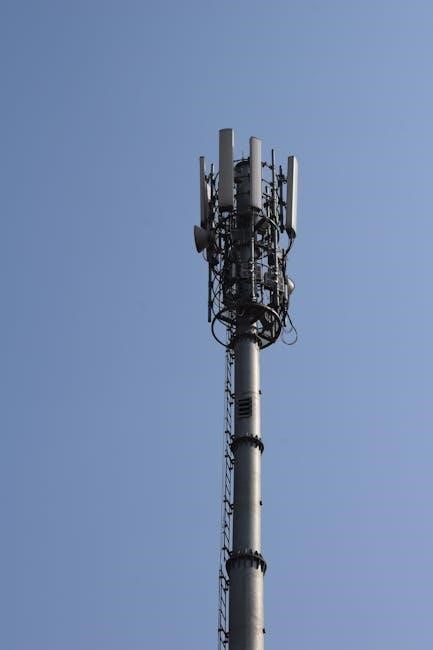Slot Antennas for Ham Radio: The Forgotten Antenna
Slot antennas, often overlooked in ham radio since their 1938 introduction, possess a unique aura of mystery. This guide delves into the world of slot antennas, exploring their design, function, and benefits for ham radio enthusiasts, revealing why they shouldn’t remain forgotten.
Slot antennas, intriguing alternatives to traditional antennas, present a unique approach to radio frequency (RF) communication. Unlike their wire-based counterparts, slot antennas utilize a radiating slot cut into a conductive surface, often a metallic plane or waveguide. This unconventional design offers distinct advantages, making them suitable for various applications, including ham radio.
Initially developed in the late 1930s, slot antennas have found applications in diverse fields, from aviation and microwave communication to computer technology. However, within the ham radio community, they remain relatively unexplored. This introduction aims to demystify slot antennas, highlighting their potential benefits and providing a foundation for understanding their operation.
We’ll explore the basic principles behind slot antenna operation, comparing them to traditional antenna designs. Furthermore, we will delve into practical homebrew slot antenna projects spanning HF to UHF frequencies. By examining their characteristics and potential applications, we hope to encourage amateur radio enthusiasts to rediscover these “forgotten” antennas and unlock their capabilities.

The exploration will include discussions around stealth antenna applications and their integration with satellite dishes, further showcasing their verstality. With resources from experts like John Portune W6NBC, this guide should prove useful.
Why Slot Antennas are “Forgotten”
Despite their potential benefits, slot antennas have largely remained “forgotten” within the ham radio community. Several factors contribute to this oversight. One primary reason is a lack of familiarity. Many ham radio operators are primarily exposed to traditional wire antennas during their initial training and experimentation. The more esoteric nature of slot antenna design, involving concepts of waveguide theory and impedance matching in unconventional ways, can seem daunting to newcomers.
Historically, slot antennas were introduced around the same time as television broadcasting, which initially focused on HF. With the advent of television, amateur radio operators shifted their focus towards other antenna designs. The initial complexity of slot antenna design made them less appealing compared to simpler wire antennas, which were adequate for many early ham radio applications. The perception that slot antennas were primarily suitable for microwave applications further limited their adoption in the broader ham radio community.
The lack of readily available resources and beginner-friendly guides has also contributed to their obscurity. While information on traditional antennas is abundant, detailed explanations of slot antenna design and construction are less common, creating a barrier to entry for interested experimenters. However, resources such as John Portune W6NBC’s book, “Slot Antennas for Ham Radio: The Forgotten Antenna”, seeks to address this gap.
Advantages of Slot Antennas for Ham Radio
Slot antennas offer several compelling advantages that make them worthy of consideration for ham radio applications. One significant benefit is their low profile. Because they can be integrated into conductive surfaces, they are less obtrusive than traditional antennas. This makes them ideal for situations where aesthetics or stealth are important, such as in apartment buildings or areas with antenna restrictions. Their compact size and shape makes them excellent candidates for indoor stealth antennas, allowing operators to maintain a presence on the airwaves without attracting unwanted attention.
Another key advantage is their wide bandwidth. Slot antennas can often operate effectively over a broader range of frequencies compared to some other antenna types. This can be particularly useful for ham radio operators who enjoy experimenting with different bands without needing to constantly re-tune or switch antennas. Their ability to be easily integrated into existing structures represents another practical benefit, as slot antennas offer a viable solution for operators seeking high performance without dominating the landscape.
Furthermore, slot antennas often exhibit favorable radiation patterns, contributing to their efficiency. Their unique design characteristics can provide omnidirectional coverage, ensuring consistent signal strength in all directions.
Disadvantages of Slot Antennas for Ham Radio
While slot antennas present several advantages, it’s crucial to acknowledge their drawbacks for ham radio applications. One notable disadvantage is their potential for lower gain compared to some traditional antennas, especially at lower frequencies. This can limit their effective range, particularly when communicating with distant stations or operating in areas with weak signals. The smaller physical size of slot antennas, while beneficial for stealth, can also contribute to this reduced gain, making it a trade-off to consider.

Another challenge associated with slot antennas is their impedance matching. Achieving an optimal match between the antenna and the transmission line can be complex, often requiring careful tuning and adjustments. Improper impedance matching can lead to signal loss and reduced efficiency, negating some of the antenna’s potential benefits. Furthermore, the construction of slot antennas can be more intricate than that of simple wire antennas, necessitating greater precision and expertise. This may pose a barrier for some ham radio operators, especially beginners, who prefer simpler antenna designs.
Finally, while slot antennas can be stealthy, their performance can be significantly affected by their surroundings. Proximity to other objects or structures can distort their radiation pattern and decrease efficiency.
Basic Principles of Slot Antenna Operation
Slot antennas operate on principles complementary to those of traditional dipole antennas. Instead of radiating from a conductive element, they radiate from a slot cut into a conductive surface, typically a metallic plane or waveguide. When the slot is excited by a radio frequency (RF) source, it creates an oscillating current distribution along its length, producing electromagnetic waves.
The behavior of a slot antenna is closely related to its dimensions, particularly its length and width. The length of the slot is typically designed to be approximately one-half wavelength of the desired operating frequency, similar to a half-wave dipole. This resonant length allows for efficient radiation of the RF energy. The width of the slot influences the antenna’s impedance and bandwidth. A wider slot generally results in a lower impedance and a wider bandwidth, while a narrower slot yields a higher impedance and a narrower bandwidth.
The polarization of the radiated waves from a slot antenna is typically perpendicular to the slot’s orientation. For example, a horizontally oriented slot will produce vertically polarized waves. Understanding these basic principles is essential for designing and optimizing slot antennas for specific ham radio applications.
Slot Antennas vs. Traditional Antennas

Slot antennas and traditional antennas, such as dipoles and Yagis, represent distinct approaches to radiating radio frequency energy. While both achieve the same fundamental goal, they differ significantly in their physical structure, radiation characteristics, and application suitability.
Traditional antennas typically consist of conductive elements, like wires or rods, that are directly excited by the RF source. In contrast, slot antennas radiate from a slot or aperture cut into a conductive surface. This difference in physical structure leads to variations in their radiation patterns. Dipoles, for instance, exhibit a donut-shaped radiation pattern, while slot antennas can produce more complex patterns depending on the slot’s geometry and surrounding structure. Slot antennas often provide omnidirectional gain around the azimuth with horizontal polarization.
Slot antennas are often favored in applications requiring low profiles or integration into existing structures. Their compact form factor makes them ideal for stealth installations or situations where space is limited. Traditional antennas, on the other hand, may offer higher gain and directivity, making them suitable for long-distance communication. The choice between slot antennas and traditional antennas depends on the specific requirements of the ham radio application.
Homebrew Slot Antenna Projects (HF to UHF)
Embarking on homebrew slot antenna projects opens a fascinating avenue for ham radio enthusiasts to explore antenna design and construction across a wide frequency range, from HF to UHF. The relative simplicity of slot antenna construction makes them an excellent choice for experimentation and customization.

For HF bands, projects might involve cutting slots into metal sheets or enclosures, carefully considering the dimensions to achieve resonance at the desired frequency. VHF and UHF projects often leverage printed circuit board (PCB) techniques to create precise slot geometries. Experimentation with different slot shapes, sizes, and feed methods allows for fine-tuning the antenna’s performance characteristics.
One popular project involves creating a 2-meter slot antenna disguised within a TV satellite dish, effectively concealing the antenna while maintaining reasonable performance. Detailed plans and instructions for such projects can be found in ham radio publications like QST and on websites dedicated to antenna design. Building your own slot antenna provides invaluable hands-on experience and allows for tailoring the antenna to specific operating requirements and space constraints.
Stealth Antenna Applications
Slot antennas lend themselves remarkably well to stealth antenna applications, offering ham radio operators the ability to maintain a low profile while still enjoying effective communication capabilities. Their inherent design allows for integration into existing structures and objects, making them less conspicuous than traditional antennas.
One popular technique involves concealing a 2-meter slot antenna within a TV satellite dish, effectively disguising the antenna as an everyday object. This approach is particularly useful in situations where external antennas are restricted or discouraged. Other stealth applications include embedding slot antennas within building materials, such as walls or ceilings, or incorporating them into decorative elements.
Paint can be used to further camouflage the antenna, making it blend seamlessly with its surroundings. The low profile and unobtrusive nature of slot antennas make them an ideal choice for ham radio operators who prioritize aesthetics or face limitations on antenna visibility. Careful planning and execution are key to achieving optimal performance while maintaining a discreet presence.
Integrating Slot Antennas with Satellite Dishes
Integrating slot antennas with satellite dishes presents a clever method for achieving stealth and maximizing antenna efficiency. This approach involves cutting a slot antenna directly into the reflector of a satellite dish, effectively transforming the dish into a dual-purpose communication device.
The satellite dish acts as a reflector, focusing the radio waves onto the slot antenna, thereby increasing its gain and directivity. This integration is particularly effective for VHF and UHF frequencies, where the size of the satellite dish is comparable to the wavelength of the radio signals.
By carefully positioning and tuning the slot antenna within the dish, ham radio operators can achieve excellent performance while maintaining a discreet and aesthetically pleasing setup; This technique is ideal for situations where external antennas are restricted or where a low profile is desired. Furthermore, the existing structure of the satellite dish provides a stable and robust platform for the slot antenna, ensuring reliable operation even in adverse weather conditions.
Resources: John Portune W6NBC’s Work
John Portune, W6NBC, is a prominent figure in the exploration and promotion of slot antennas for ham radio applications. His comprehensive work, “Slot Antennas for Ham Radio: The Forgotten Antenna,” serves as a valuable resource for enthusiasts seeking to understand and implement these often-overlooked antennas.
Portune’s book delves into the history, theory, and practical applications of slot antennas, offering insights into their design, construction, and performance characteristics. He provides detailed examples of homebrew slot antenna projects spanning HF to UHF frequencies, empowering readers to experiment and build their own antennas.
Furthermore, Portune’s research extends to innovative applications, such as integrating slot antennas with satellite dishes for stealth and enhanced performance. His work highlights the advantages of slot antennas, including their low profile, wide bandwidth, and ease of integration into existing structures. By sharing his knowledge and experiences, John Portune W6NBC has significantly contributed to reviving interest in slot antennas within the ham radio community, making his resources essential for anyone exploring this fascinating antenna technology.
